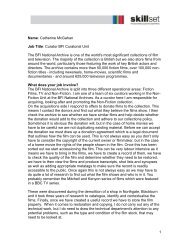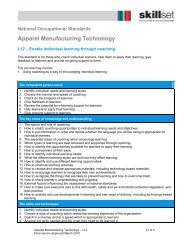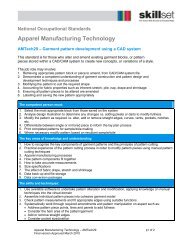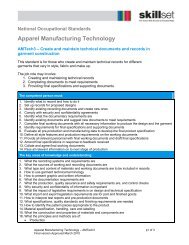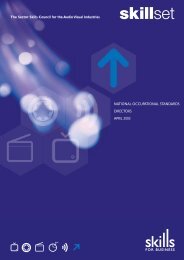Publishing in the Knowledge Economy - DTI Home Page
Publishing in the Knowledge Economy - DTI Home Page
Publishing in the Knowledge Economy - DTI Home Page
You also want an ePaper? Increase the reach of your titles
YUMPU automatically turns print PDFs into web optimized ePapers that Google loves.
<strong>Publish<strong>in</strong>g</strong> <strong>in</strong> <strong>the</strong> knowledge economy<br />
The <strong>in</strong>dustry today<br />
13.4 Journals<br />
Strengths<br />
• Subscription bus<strong>in</strong>ess model<br />
• At forefront of technological developments<br />
• No taxation of <strong>in</strong>formation and knowledge <strong>in</strong><br />
pr<strong>in</strong>t<br />
• English language – for content sourc<strong>in</strong>g and<br />
sales<br />
• Science and research base<br />
• Brand resides <strong>in</strong> journal (strength if owned)<br />
• Ability to cross-promote from one journal to<br />
ano<strong>the</strong>r<br />
• Direct relationships with subscribers <strong>in</strong><br />
many cases<br />
Constra<strong>in</strong>ts and weaknesses<br />
• Inadequate fund<strong>in</strong>g of higher education and<br />
research<br />
• Inadequate fund<strong>in</strong>g of academic libraries<br />
• Brand resides <strong>in</strong> journal (weakness if owned<br />
by <strong>in</strong>stitution or society)<br />
• Hard to launch new titles – need to persuade<br />
customers to drop one to make room<br />
Threats<br />
• Copyright <strong>in</strong>fr<strong>in</strong>gement<br />
• Dis<strong>in</strong>termediation by academics publish<strong>in</strong>g<br />
direct <strong>in</strong> electronic journals<br />
• New <strong>in</strong>termediaries may <strong>in</strong>terpose between<br />
publishers and customers and command <strong>the</strong><br />
customer relationship and customer data<br />
• Inequitable taxation of electronic content and<br />
migration of activity to US<br />
• Cost of ma<strong>in</strong>ta<strong>in</strong><strong>in</strong>g and manag<strong>in</strong>g digital<br />
archive<br />
• Power of library customers<br />
• Electronic Inter-Library Loan<br />
• Dissolution of <strong>the</strong> journal as a package of<br />
articles – pay per item becomes prevalent<br />
(could also be an opportunity)<br />
• Concentration of ownership allows big players<br />
to squeeze out smaller ones through bundl<strong>in</strong>g<br />
and o<strong>the</strong>r practices<br />
• Big players cause resentment among authors<br />
and customers<br />
• More aggressive use of patents limits content<br />
availability<br />
Opportunities<br />
• Electronic distribution br<strong>in</strong>gs down costs<br />
• New service offer<strong>in</strong>gs possible based on<br />
closer relationship with customer and new<br />
technologies<br />
• Dissolution of <strong>the</strong> journal as a package of<br />
articles – pay per item becomes prevalent<br />
• New fields of study open up and high degree<br />
of academic specialisation creates new journal<br />
possibilities (but difficult to sell without<br />
knock<strong>in</strong>g out ano<strong>the</strong>r title – budget constra<strong>in</strong>ts,<br />
power of library <strong>in</strong>termediaries)<br />
• Alliances between publishers and universities<br />
to create e-learn<strong>in</strong>g platforms<br />
76




